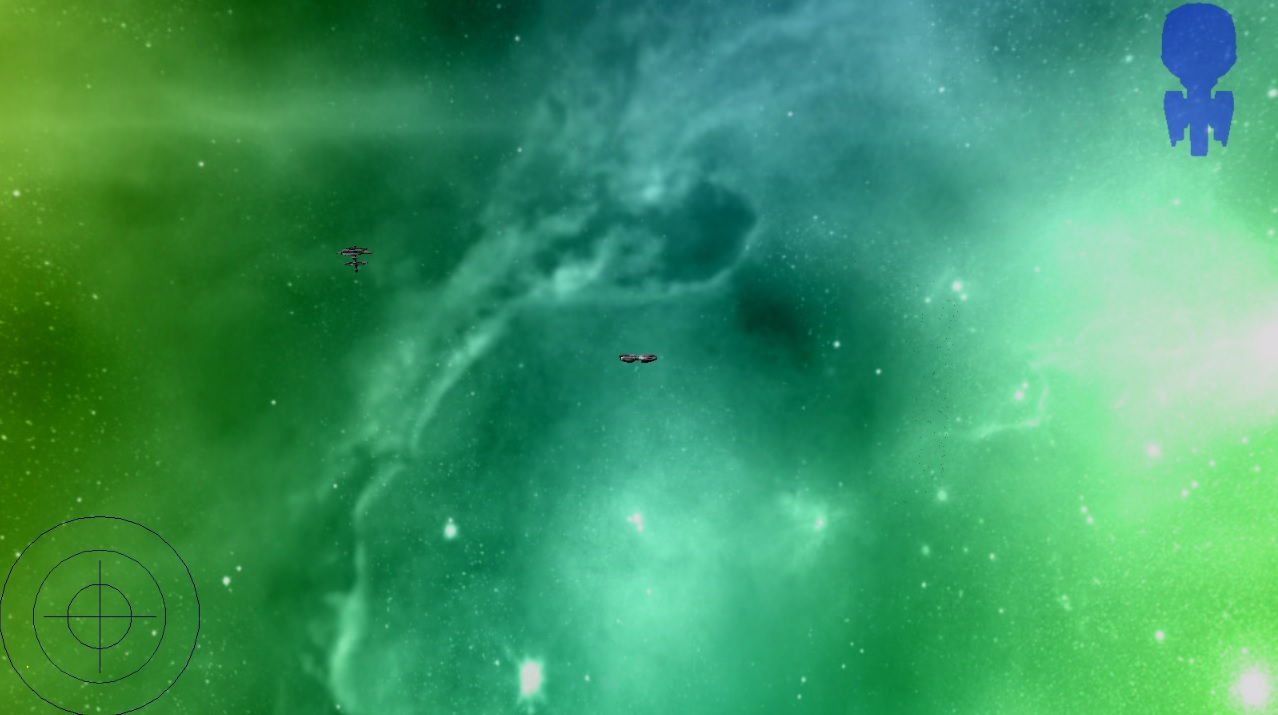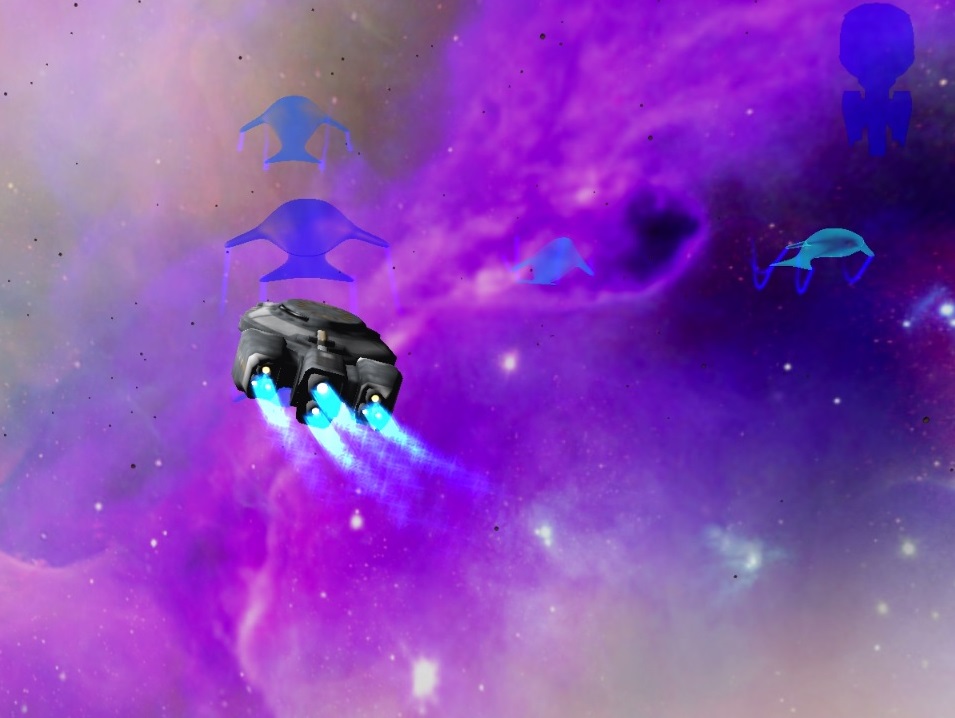Tom's Guide Verdict
"Artemis" is not an official "Star Trek" game, but it's about as close as you can get to actually sitting on the bridge of the Enterprise.
Pros
- +
Feels like being on "Star Trek"
- +
Each station contributes something useful
- +
Encourages teamwork and role-playing
Cons
- -
Not fun without six imaginative players
- -
No narrative or story missions
- -
Very little traditional gameplay
Why you can trust Tom's Guide
The final frontier
"Artemis Spaceship Bridge Simulator" is not an official, licensed "Star Trek" game, but it's about as close as you can get to actually sitting on the bridge of the USS Enterprise.
That said, "Artemis" is a curious beast. It's not a game in the traditional sense: As its title implies, "simulator" is perhaps a better moniker. Although you have objectives to complete and activities to perform, there is no overarching story, nor real skill involved for any one aspect of "gameplay."
Where "Artemis" excels, though, is making you feel like a real bridge officer aboard a starship — provided that you're ready to make some of your own fun.
Gameplay
From a mechanics standpoint, the gameplay in "Artemis" is extremely simplistic and amounts to little more than following instructions and pushing the same buttons over and over. There is not much to do, and no real opportunity for growth.
MORE: 15 MMOs for Multiplayer Mayhem
"Artemis" is a multiplayer game, and although you can play with as few as three people, you'll definitely want the full complement of six — one for each duty station.
Get instant access to breaking news, the hottest reviews, great deals and helpful tips.
There are five stations: Helm, Engineering, Weapons, Science and Communications. One player, the Captain, oversees the crew, although he or she has no direct control over gameplay.
Duties vary by station. The Comms officer, for example, can receive messages from nearby space stations ("Collect X item and deliver it to Y location") or taunt enemy ships during combat. The Weapons officer can load and fire torpedoes or attack enemies using beam weapons. Engineering can divert power to critical stations, like torpedoes during an intense firefight or impulse engines when it's time to turn tail.
Actually performing any given action is extremely simple. Increasing power output to the warp engines doesn't require a rapid sequence of button presses or a mini-game; you just slide the dials. Loading and firing a torpedo is as easy as it sounds. The real challenge and fun in "Artemis" comes not from its gameplay, but from working together as a team.
Although there are no "story" missions, per se, the average game will have you defending space stations from hostile ships, exploring anomalies in distant sectors and going toe-to-toe with deadly alien vessels. When everyone works in sync, the experience can be exhilarating.
The Captain can bark orders as Comms hails an enemy ship, Weapons readies a nuclear missile, Helm takes evasive maneuvers, Science scans for weaknesses and Engineering diverts power to the forward shields.
If everyone gets into character (and has at least a passing familiarity with how things work on the average episode of "Star Trek"), "Artemis" can be even more fun than a traditional space combat simulator.
This verisimilitude comes at a price, though. If even one crew member is missing, the game becomes significantly more difficult and less fun to play. Without a Weapons officer, you will have no way to defend against enemy ships; a missing Comms officer means that you will not be able to accept any missions.
Furthermore, the game is sorely in need of a tutorial. Its instruction manual is fairly detailed and readable, but there is a lot of trial and error required before your ship feels more like the USS Enterprise than the SS Minnow from "Gilligan's Island."
Players can all serve aboard the same ship, or explore the galaxy in tandem with up to eight fully staffed vessels (48 players). If your tastes skew a bit more toward the bloodthirsty, you can also set up games that pit player-controlled ships against each other (like Kirk and Khan in "Star Trek II").
Story
It's difficult to gauge the story in "Artemis," primarily because there is none. To be sure, there is backstory and lore: The instruction manual details a few intriguing tidbits about the heroic Terran Stellar Navy, its accomplished Admiral Su Song and a handful of alien foes.

The insectoid Kraliens, the chameleonic Arvonians, the reptilian Torgoth and the equine Skaraans all have fleshed-out appearances, societal structures and battleship designs.
The problem is that the game, by default, makes very little use of this information. Terran Stellar Navy spaceships and stations always need fairly simple things ("gather supplies and rendezvous"), and enemy ships usually want the same thing — a fight to the death.
Each game is still fairly different, especially depending on how you choose to populate your sector of space (before playing, you can set up how many enemy ships and anomalies you wish to encounter). You might be called upon to investigate a pod of space whales, or force a hostile enemy to stand down, although there's no real connective narrative tissue between the incidents.
"Artemis" does allow players to generate their own content, which means that in time, the game may be rich with story-centric missions that give players interconnected, sequential adventures like the weekly exploits of Captain Picard from "Star Trek" or Commander Adama from "Battlestar Galactica." At present, though, the game is absolutely aching for a story campaign, and is poorer for its absence.

Marshall Honorof was a senior editor for Tom's Guide, overseeing the site's coverage of gaming hardware and software. He comes from a science writing background, having studied paleomammalogy, biological anthropology, and the history of science and technology. After hours, you can find him practicing taekwondo or doing deep dives on classic sci-fi.
-
kenneth22 my friend's sister makes $86 an hour on the computer. She has been laid off for 8 months but last month her pay check was $17343 just working on the computer for a few hours. Continue......... www.pro43.comReply

